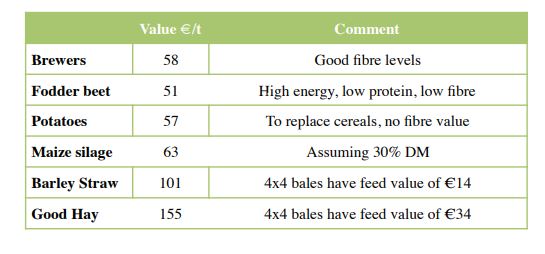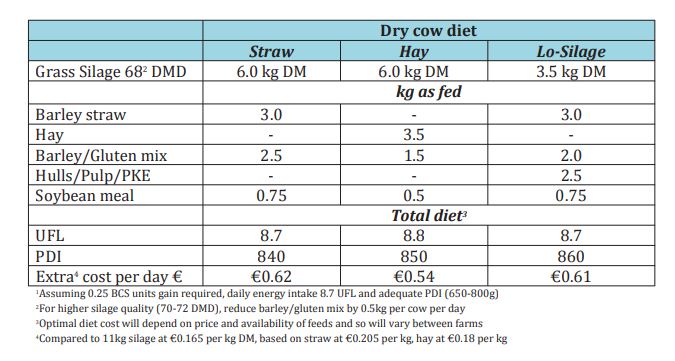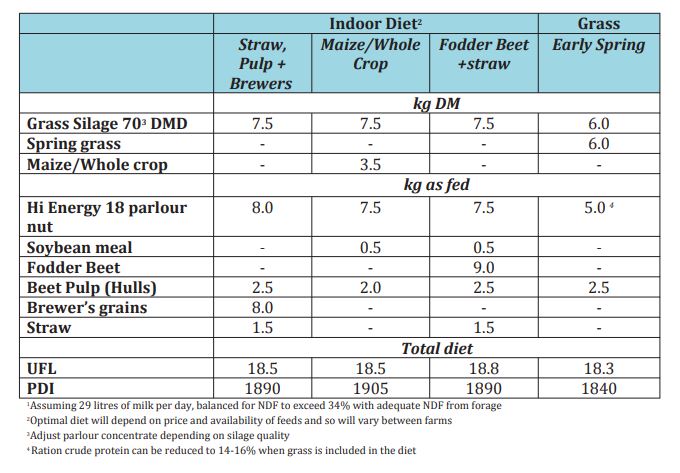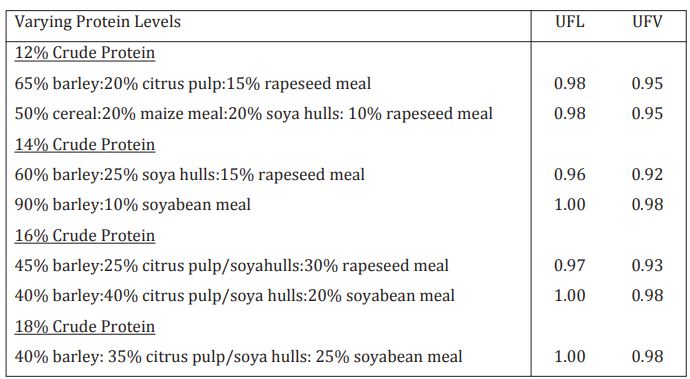Fodder and Finance 2018/2019
The weather in 2018 has put pressure on fodder stocks across the country. This has impacted on all farm enterprises and resulted in financial strain on some farmers.
The weather in 2018 has put pressure on fodder stocks across the country. This has impacted on all farm enterprises and resulted in financial strain on some farmers.
It is important that farmers establish both the feed and financial situation on their own farm. Doing this task with an advisor or consultant, can help relieve some of the stress associated with this situation and often a solution becomes obvious.
It is also important to ensure you have enough bedding where straw is in scarce supply and check that there is adequate feeding space on the farm to facilitate restricting access to silage and feeding meals.
Even if you have enough feed for the winter, it’s important to regularly re-assess what you have because no one knows what weather conditions will be like in the spring.
Teagasc advisors across the country are available to provide advice to farmers, clients and non-clients alike over the coming months. Please contact your local office if you need assistance.
Cash flow management is esssential to business success.
Turning out stock in early spring will reduce the demand for feed over the winter:
Selling stock will reduce demand for winter feed:
The following table outlines the quantities of silage and meals to feed with 50% and 75% of forage requirement available on farm.

What to look out for if restricting access to silage:
If feeding restricted silage and concentrates, diets have to be managed carefully to meet animal performance and feed-saving targets. For example, feeding mature cows 3-4kg concentrates along with ad-lib silage will typically only reduce daily forage intakes by 5-10%. Furthermore, feeding additional meals with ad lib silage may cause excess body condition gain.
Clearly, restricting daily silage allowance must form part of the feeding plan if using meal to stretch fodder supplies.
Practical guidelines on feeding restricted silage plus concentrates:
A 3-4kg concentrate feeding rate can be used to reduce daily silage feeding by 20-25% in a dairy herd. For example, where 12 silage blocks per day would usually be fed ad-lib to dry cows, this would be reduced to around 9 silage blocks per day to the same cow numbers. Balance with meal. Where silage and meal are handled separately, a simple plan may be to feed out silage to dry cows in the evening. Offer 3-4kg meal per cow as a mid-morning feed. A token amount of straw or hay (if available) may be offered along the barrier after meal feeding (1/2 round straw bale or 1/3 hay bale for 100 cows). This is not required from a feed fibre point of view, but will help satisfy cows with higher intake capacity until evening silage feeding.
Where restricted silage diets are planned, adequate feed space must be available to allow all animals access to silage at one time. This will be a major issue on many farms. Solutions will differ greatly between farms but. Take steps to address the issue before housing:

Pressure on fodder stocks for the 2018/2019 winter has seen an increase in the area of forage crops such as Forage Rape or Hybrid Brassicas (Redstart or Gorilla) being sown this autumn.
These are a useful source of feed and are even more so this year due to their ability to be used outside of the normal grazing season which was so significantly hampered by drought conditions. However, there are risks associated with these crops if animals were to gorge themselves in particular, bloat and nitrate poisoning. Consequently, there must be a plan of how to graze the crop in order to manage and maximise the return.
Estimating Crop Yield can be done using a 1m x 1m quadrat e.g. Crop weight in 1m2 = 3.5kg. DM% of forage crop ≈ 13% > 3.5kg x 10000m2 (1 hectare) x 13%DM = 4550kgDM/ha
2 hectares (5 acres) of forage crops at a yield of 4550kgDM/ha with 19 bales of silage (200kg DM/bale) will feed 25 weanlings for approximately 100 days.
While stock will be out for the winter on these crops it should be noted that you are required to have the slurry storage capacity for all animals on the farm under the Nitrates Regulations.





Notes; Because of the increased cost of barley this year a number of producers will look to substitute barley/wheat with maize meal which is currently competitively priced.
All rations should include a balanced mineral mix to suit the type of animals being supplemented.
For finishing rations, crude protein content would be adequate at 12-14%. For Autumn calving suckler cows and weanling typically rations with 16-18% crude protein would be needed.
In the case of rations being used to top restricted forage ensure that all animals have adequate feed space at the feed rail/troughs at feeding time
It is possible to successfully fed ewes on all concentrate diets with a limited access to roughage. Ewes will need 0.9kg of a standard sheep ration (min 7% Crude Fibre) per head per day to meet maintenance requirement in mid pregnancy. In late pregnancy concentrate intake should be increased in 0.2 kg increments per fortnight up to lambing. It is a good idea to provide a small amount of roughage (100-200grams DM/head/day) where ewes are bedded on slats. On this type of diet the ewes will consume approximately 100kg of concentrates over a 12 week period and the equivalent of 10% of a bale of silage / hay

James McDonnell speaks about managing finances this winter. "you must budget what is going to keep the farm and the household going this winter".